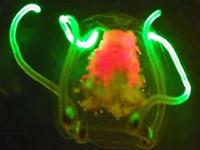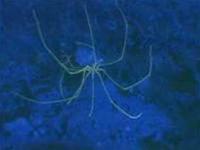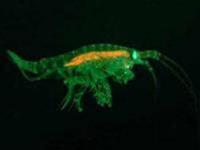 A team of American scientists specializing in deep-sea research has discovered several marine species in the Gulf of Mexico that, according to them, have never been seen before.
A team of American scientists specializing in deep-sea research has discovered several marine species in the Gulf of Mexico that, according to them, have never been seen before.
Thanks to specialized cameras, the scientists captured images of these strange marine creatures. They emit light through a mechanism that scientists have never encountered before.
According to the researchers, they not only found various unusual species, but they may have also discovered an entirely new group of marine life.
This discovery indicates that even organisms living deep on the ocean floor, where sunlight cannot reach, can still emit light and use it for hunting and other purposes.
 “But this is also very strange and hard to believe, because these organisms live at depths of up to 600 meters,” said Temmi Frank, the team leader.
“But this is also very strange and hard to believe, because these organisms live at depths of up to 600 meters,” said Temmi Frank, the team leader.
“As we know, at such depths, no kind of light can exist. These creatures emit light, but what do they need that light for?” added Edit Uyndde, head of the Oceanographic Research Institute in Florida, USA.
Currently, there are still no satisfactory answers.
The scientists further explained that the camera used in this exploration employed dim red light. “We are studying the ocean floor in a new way.
 Traditionally, in most deep-sea research, we usually use the intense white light of spotlights. Part of the reason is to avoid drawing attention to ourselves and not to frighten the underwater creatures,” Frank said.
Traditionally, in most deep-sea research, we usually use the intense white light of spotlights. Part of the reason is to avoid drawing attention to ourselves and not to frighten the underwater creatures,” Frank said.
It is known that the camera used in this research weighs about 90 kg and can operate autonomously without the assistance of scientists.
Additionally, the scientists noted that until now, we have only known a few species of crustaceans that can naturally emit light, and they live at relatively shallow depths.
Mai Hoa (According to Inauka)


















































